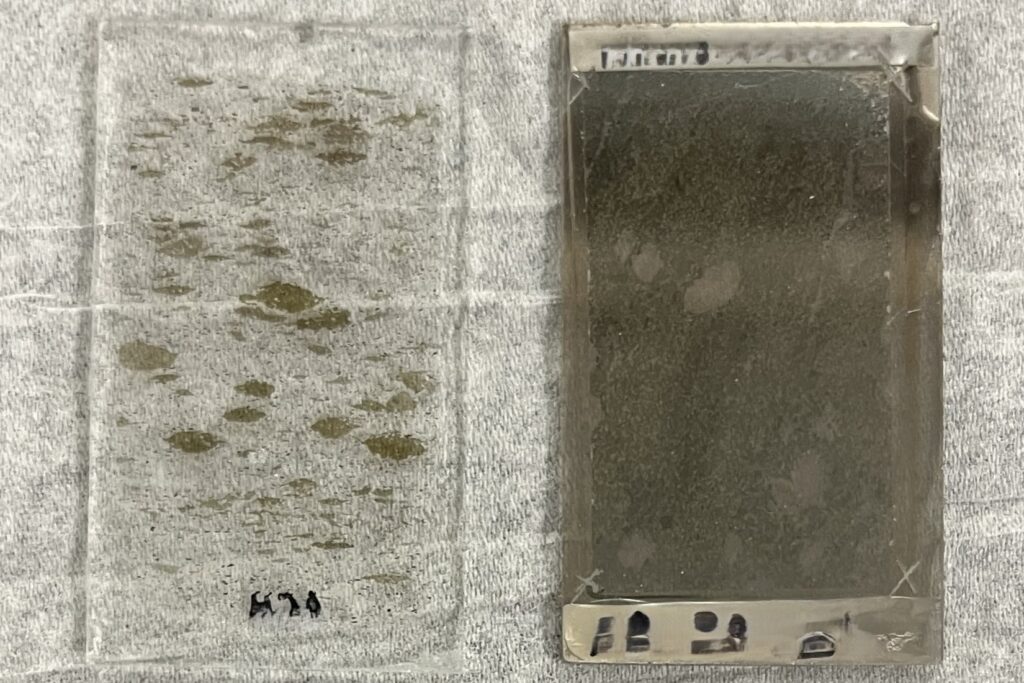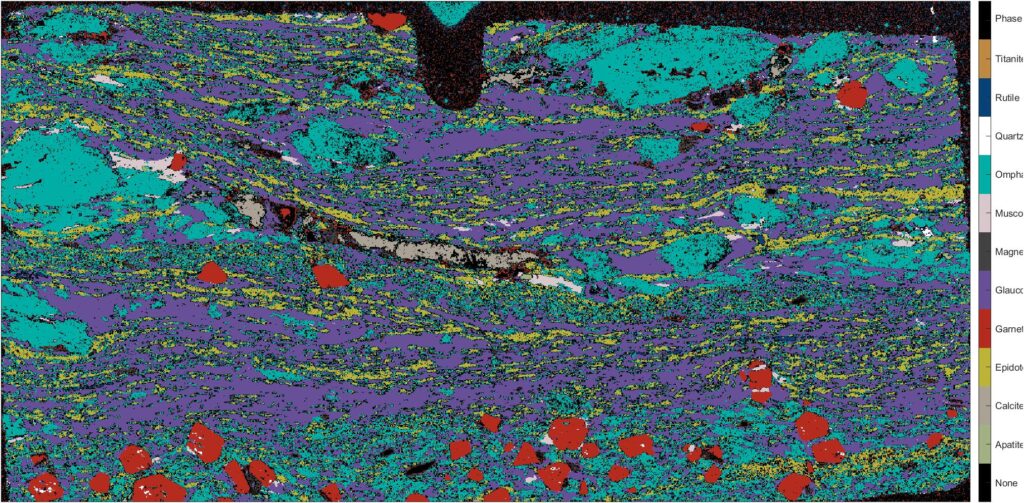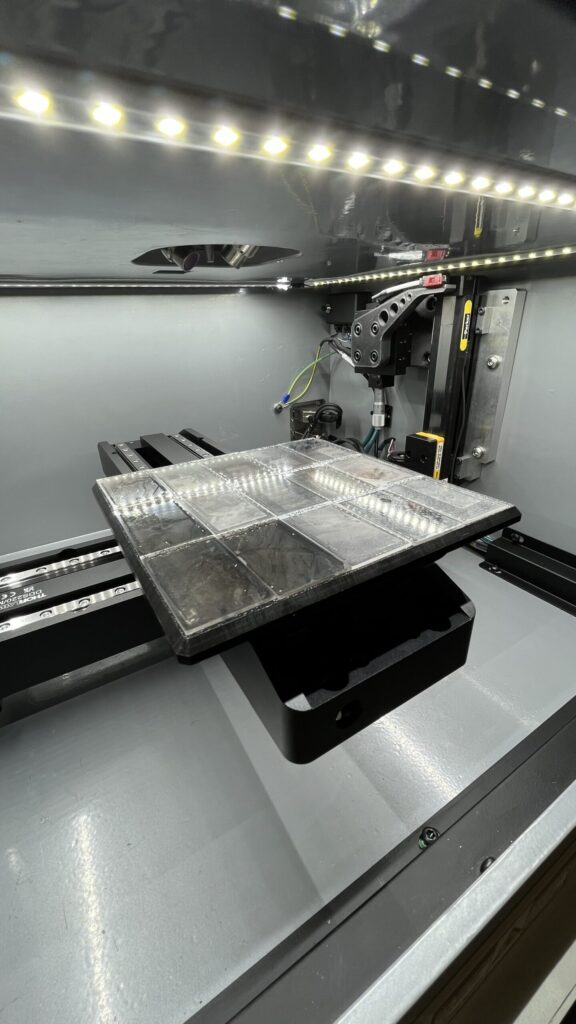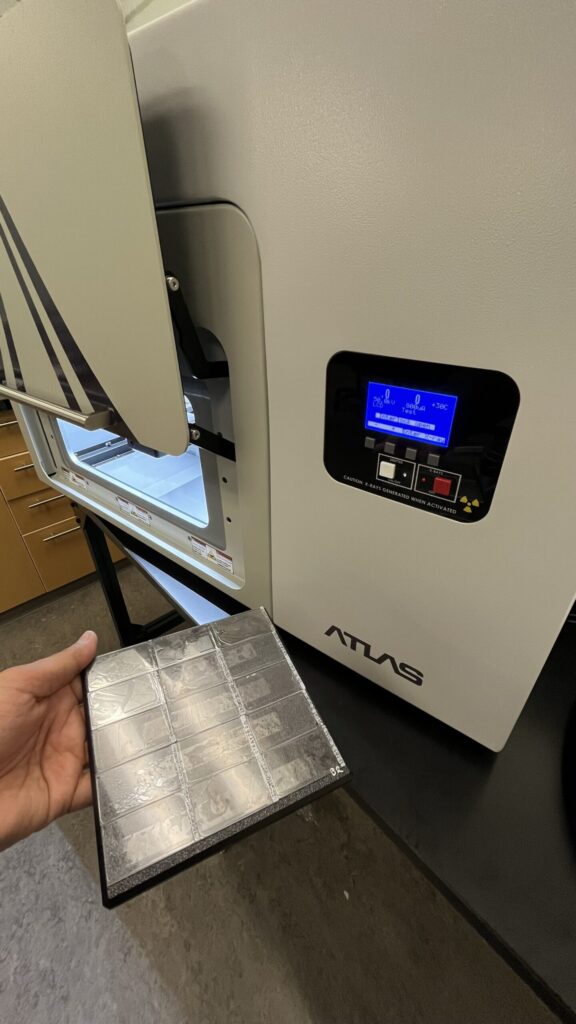The Significance of Geological Thin Sections
Creating a geological thin section is an art that requires precision and care. It begins with selecting a representative rock sample, which is critical because not all rocks exhibit the detailed mineral structure required for comprehensive analysis. Samples are chosen based on visible features, such as mineral composition, texture, and overall structure, ensuring they represent the geological questions under study. Once selected, the rock is carefully sliced, ground, and polished to achieve the thinness necessary for optical and elemental analysis.
Why is this process so important? Thin sections allow polarized light to pass through the sample, revealing mineralogical properties like birefringence, pleochroism, and extinction angles under a microscope. These properties offer insights into a rock’s history, composition, and formation processes. However, while optical analysis is essential, it has limitations, particularly in elemental detection. This is where the versatility of microXRF comes into play.
 Figure 1: Geological thin section samples.
Figure 1: Geological thin section samples.
Advancing Thin Section Analysis with MicroXRF
MicroXRF is a nondestructive analytical technique that brings unparalleled precision to geological thin section analysis. By employing a focused X-ray beam, microXRF allows for identifying and quantifying elemental compositions—even at trace levels—directly on the sample. This technique offers significant benefits over traditional methods and enhances the capabilities of geologists and petrologists.
1. Superior Detection Sensitivity
One of the most compelling features of microXRF is its superior sensitivity. With advanced X-ray sources and state-of-the-art detectors, microXRF can detect even the slightest traces of elements within geological thin sections. This high sensitivity is particularly valuable when studying trace elements or rare minerals, which often provide crucial clues about rock formation and alteration processes. MicroXRF can analyze elements across the periodic table, giving researchers a detailed chemical profile of their samples.
2. Accelerated Sample Processing
In geological research, time is a precious resource. MicroXRF significantly increases sample throughput compared to traditional methods like SEM-EDS (Scanning Electron Microscopy with Energy Dispersive Spectroscopy). Unlike SEM-EDS, microXRF does not require extensive sample preparation steps such as coating or placing the sample in a vacuum. This allows geologists to quickly analyze larger areas of thin sections, processing and interpreting data more efficiently. As a result, microXRF helps accelerate the pace of research and discovery.
Figure 2: On the left, the Atlas M microXRF system is shown in standby mode, ready to receive thin section samples for analysis. The right image provides a view inside the Atlas M chamber, displaying 15 prepared thin sections securely positioned in the sample holder just before the start of the analysis run. This showcases the system’s capacity for high-throughput, simultaneous sample processing.
3. Improving Workflow with Complementary Techniques: EMPA and LA-ICP-MS
MicroXRF not only integrates seamlessly into existing lab workflows but also serves as a complementary technique to other powerful methods like Electron Microprobe Analysis (EMPA) and Laser Ablation-Inductively Coupled Plasma Mass Spectrometry (LA-ICP-MS).
- Electron Microprobe Analysis (EMPA) focuses on high-precision, quantitative elemental analysis, typically in a smaller spot size. MicroXRF can provide a broader, more rapid overview of elemental distribution, making it an ideal pre-screening tool for selecting specific areas of interest for more detailed EMPA analysis. This workflow improves efficiency by reducing the time spent identifying suitable regions for microprobe analysis, allowing researchers to target critical areas quickly.
- Laser Ablation-Inductively Coupled Plasma Mass Spectrometry (LA-ICP-MS) is used for precise isotopic and trace element analysis. MicroXRF can assist in mapping elemental distributions across a thin section before more localized LA-ICP-MS measurements, ensuring that geologists focus on regions of interest where trace element analysis will yield the most meaningful data. This pre-screening reduces time and effort by avoiding unnecessary LA-ICP-MS runs on less informative areas.
By enhancing sample selection for EMPA and LA-ICP-MS and reducing the time spent on less informative areas, microXRF is a valuable tool for refining workflows in petrological and geochemical laboratories.
4. High-Resolution Elemental Mapping
MicroXRF enables detailed elemental mapping, providing geologists with visual representations of how elements are distributed across thin sections. This capability is invaluable for identifying zoning patterns in minerals, determining the heterogeneity of rock-forming minerals, or locating areas of geochemical alteration or contamination.
The ability to map elements with high spatial resolution adds a layer of context to petrological studies that optical microscopy or bulk chemical analysis cannot achieve alone.
 Figure 3: Phase map of a geological thin section acquired using the Atlas M microXRF system at the University of British Columbia’s Kelowna campus. The sample’s elemental and mineral phase distribution was processed and visualized using XMap Tools, providing detailed insights into the mineralogical composition and spatial relationships across the thin section. This high-resolution phase map highlights the precision and analytical power of the Atlas M microXRF in geochemical analysis.
Figure 3: Phase map of a geological thin section acquired using the Atlas M microXRF system at the University of British Columbia’s Kelowna campus. The sample’s elemental and mineral phase distribution was processed and visualized using XMap Tools, providing detailed insights into the mineralogical composition and spatial relationships across the thin section. This high-resolution phase map highlights the precision and analytical power of the Atlas M microXRF in geochemical analysis.
Conclusion
Incorporating microXRF technology into analyzing geological thin sections brings transformative benefits to studying Earth’s materials. By offering enhanced sensitivity, faster sample processing, and seamless integration with other analytical techniques such as EMPA and LA-ICP-MS, microXRF allows researchers to extract more detailed information from samples with greater speed and precision. This makes microXRF an invaluable tool for unlocking the full potential of thin section analysis, helping geologists gain deeper insights into Earth’s history, mineral composition, and geological processes.
Ready to Enhance Your Geochemical Analysis?
If you want to improve your geological research’s accuracy, efficiency, and depth, it’s time to explore how microXRF can transform your workflow. At IXRF Systems, our Atlas microXRF offers cutting-edge capabilities to elevate your thin section and geochemical analysis. Contact us today to learn how we can help tailor a microXRF solution for your research needs. Submit a request now to start a project and discover firsthand how microXRF can revolutionize your geological studies!




